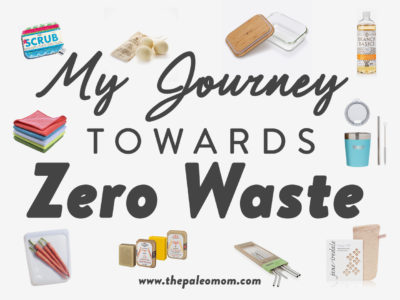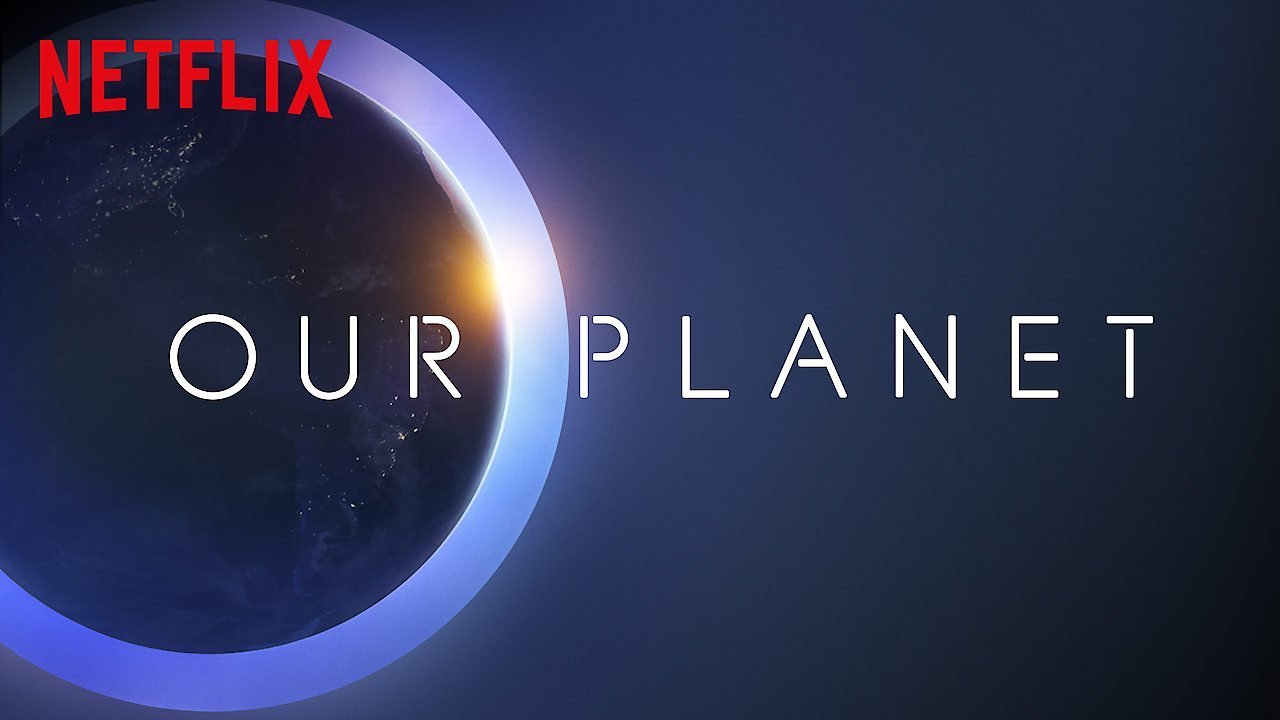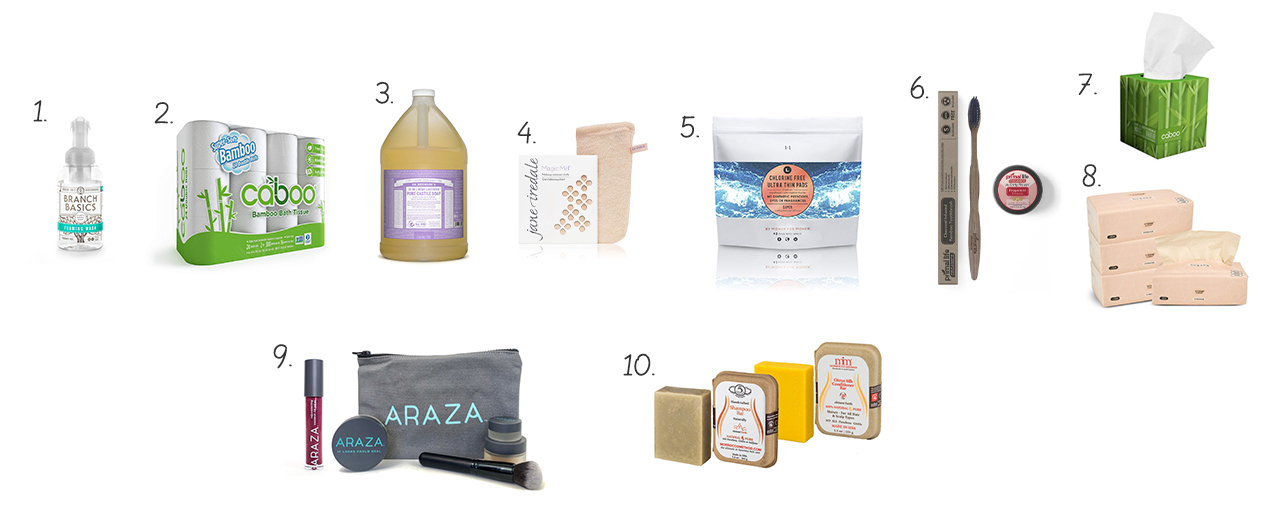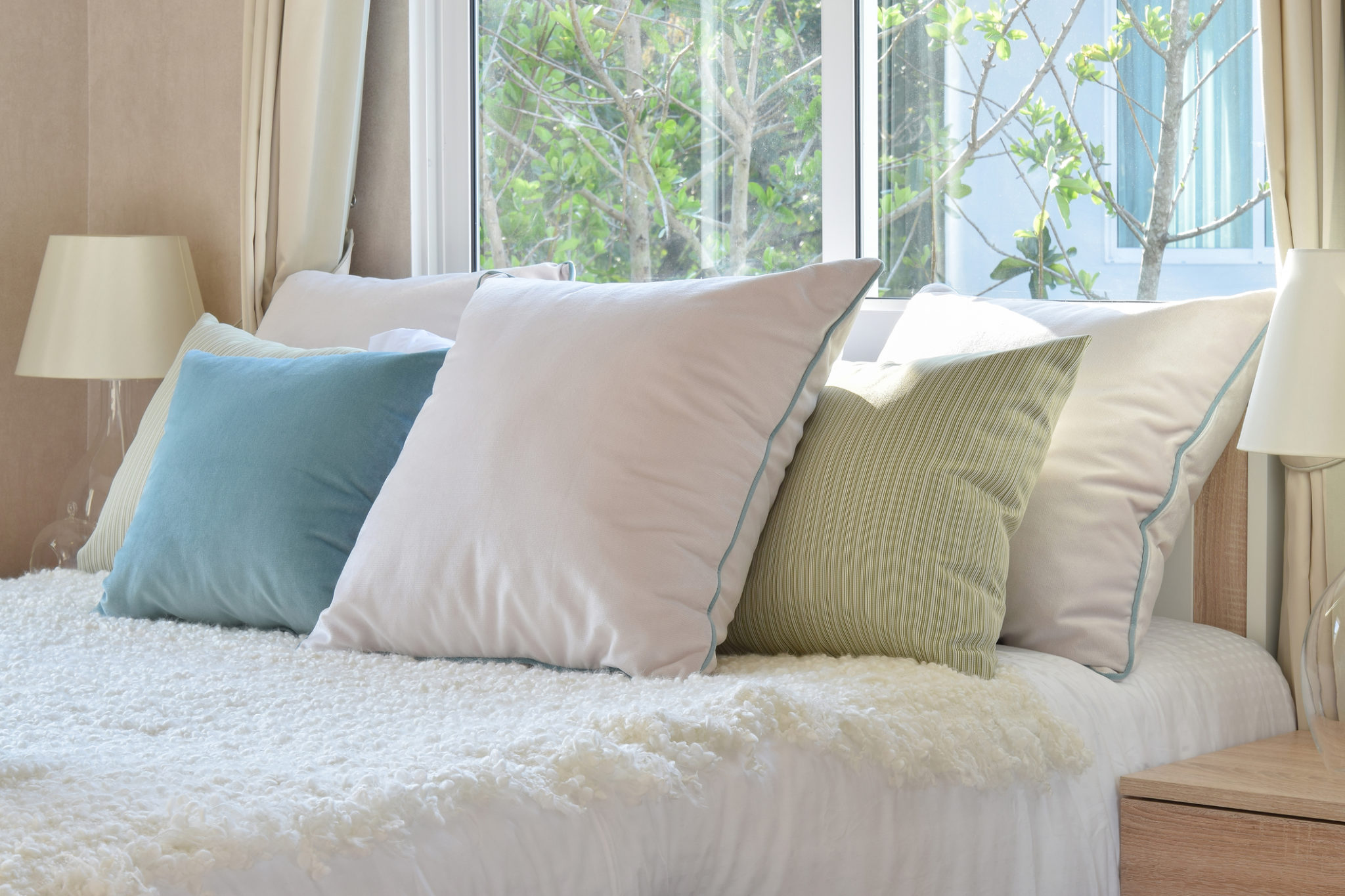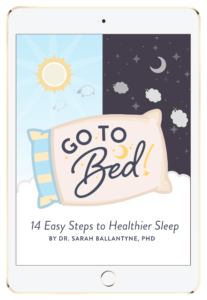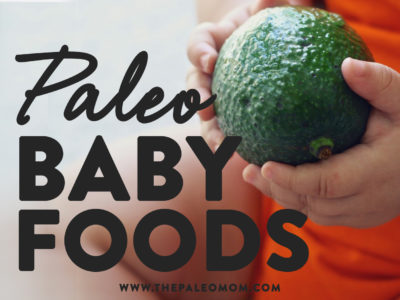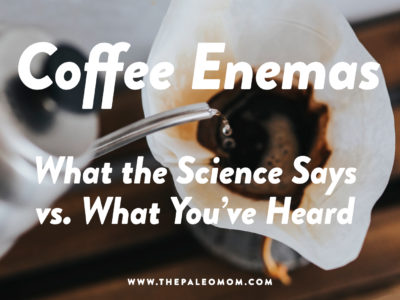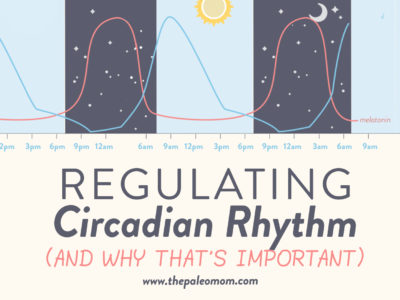Table of Contents[Hide][Show]
In the spring, my family and I watched the Our Planet documentary series on Netflix, narrated by Sir David Attenborough. The series (which I highly recommend) showcased the stunning beauty of nature, highlighted the resiliency of natural environments, and yet emphasized the detrimental human impact on entire ecosystems. The documentary was incredibly impactful. After the first episode, I researched a recycling center to bring glass waste to (since our recycle service at our home doesn’t take glass). After the second episode, my husband researched solar panels for the house (still on the wish-list). By the end of the series, my entire family was dedicated to reducing our carbon footprint and negative impact on the environment.
In fact, my family now has a saying that we use whenever one of us reaches for a less environmentally-friendly choice (grabbing that single-use plastic straw instead of the stainless steal straws, for example) that is simply “BUT THE PLANET!”. We are holding each other accountable and working as a team to make changes to the products and resources we use with the ultimate goal of zero waste.
Oh, we have a long way to go. But, in the last six months, my family has made great strides in reducing our use of single-use plastics and paper products, reducing the amount of trash that we create, reducing our use of natural resources, all while making other choices to reduce carbon emissions and the release of environmental pollutants and toxins. I’m sharing the progress we’ve made (and innovative products I’ve discovered!) not because we’ve achieved that lofty goal of being a zero-waste family, but because the cumulative benefit to the environment of all of us making these types of changes can be HUGE! As the meme goes: We don’t need a handful of people doing zero waste perfectly; we need millions of people doing zero waste imperfectly. I fall into that later category and I’d like to invite you to join me!
Save 80% Off the Foundations of Health
Expand your health knowledge on a wide range of topics relevant to you, from how to evaluate scientific studies, to therapeutic diet and lifestyle, to leaky gut and gut microbiome health, to sustainable weight loss, and much more!!!
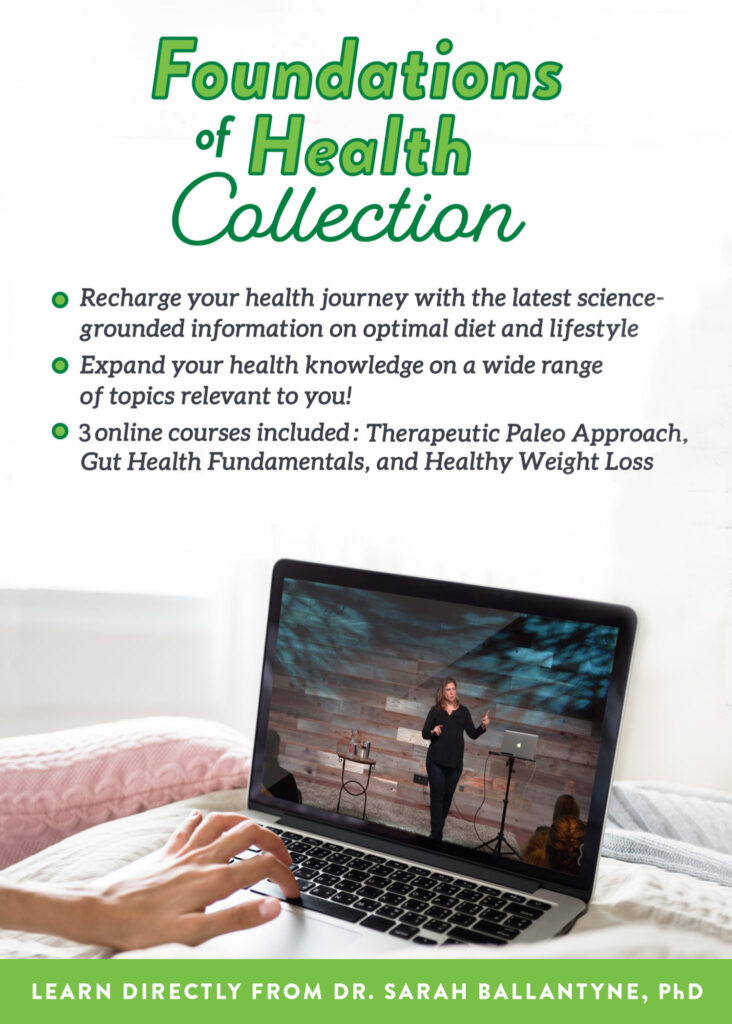
One of the things that surprised me in my efforts to reduce my family’s carbon footprint is that I thought it would feel like a sacrifice of convenience. I was, of course, ready to make that trade-off (BECAUSE THE PLANET!), but in actuality, we’ve adapted very quickly to new habits. It also helps that I’ve found some new favorite products that are much better for the environment, still convenient, and aren’t much more expensive than what I was using before (and in many more places, I’m saving money).
Before I dive into the changes we’ve made, I want to summarize some of the environmentally-friendly habits my family already had in place. We eat mostly locally-produced food and our plates are 3/4 vegetables so our meat and seafood consumption is moderate. I don’t buy many packaged foods (at least compared to pre-Paleo) and we never use things like paper plates or styrofoam products. We pack our lunches (in lunchboxes), rarely eat out (and never fast food), and rarely waste food (I admit that have an encyclopedic brain for everything in the fridge, freezer and pantry so food almost always gets eaten before going bad, including leftovers). We use re-usable water bottles and travel mugs, re-usable grocery bags, and always re-use any plastic shopping bags (for scooping kitty litter or for the small trash cans in the kids’ rooms and bathrooms) before they get tossed in the trash. We already kept the thermostat pretty low in the winter (65F during the day, 62F at night) and high in the summer (78F). My husband, who commutes to work, drives a hybrid vehicle. We recycle all plastics, paper, and aluminum cans (our recycle service doesn’t take glass). Items that aren’t recyclable often end up in the craft project pile.
All-in-all, we had a pretty good head-start on this journey.
So with that in mind, my goals for our journey towards zero waste included:
- reduce and ultimately eliminate our use of single-use plastics
- reduce our use of recyclable plastics (in favor of more sustainable products)
- reduce and ultimately eliminate our use of paper products
- reduce our use of natural resources (like water and electricity)
- switch to environmentally-friendly household products (toxin-free and made with renewable resources)
Yes, that seems ambitious, but the reason I’m writing this post is to tell you that we’ve succeeded while overall saving money and without feeling like we’re sacrificing convenience! Woot!
Here is my summary of all of the product swaps and behavioral changes we’ve made to achieve these goals.
In the Kitchen
Let’s start with the kitchen, since I think of this room as the center of our family life. This is probably the area where I’ve made the most changes, especially in terms of replacing single-use plastics and paper products with sustainable and reusable options.
Serving food:
- Napkins – We used to use paper towel rather than paper napkins, but we’ve switched to using cloth napkins. The kicker is that I already had about a dozen cloth napkins sitting in my linen cupboard, not being used. Assuming I can throw the dirty ones into a load of laundry mid-week, that’s all we need as a family of four. If you’re looking to buy some, I recommend avoiding linen, which typically needs to be ironed, and choosing organic cotton napkins (1) instead (make sure to smooth and fold them right out of the laundry to avoid wrinkles).
- Straws – There are certain drinks that my kids just prefer to drink through a straw (like breakfast smoothies). So, we bought a set of stainless steel straws (2) and the kids love them! They clean up easily with the special brush provided.
- Lunch boxes – Even though this isn’t a new find for me, I figured I should share what we use. We love Lunchbots and use both the Cinco style (3) and the Trio style lunch boxes, depending on what food we’re packing. We’ve been using them for lunches daily for about 4 years now and they are in just as good of shape as they were brand-new! I pack them in an insulated lunch tote bag with a reusable freezer pack.
- Water bottles – We have used stainless steel reusable water bottles for years (my favorite is Healthy Human (4) brand), but we’ve re-committed to making sure we never leave the house without one. We each have our own (21-ounce size for the kids and 32-ounce size for my husband and myself) plus a 40-ounce bottle that we bring on hikes.
- Travel mugs – I got in the habit of bringing my own coffee or tea in a travel mug, just because I far prefer the coffee and tea I make at home to anything I can buy outside of the house (plus, it’s much cheaper!). My preference is Healthy Human (5) here again.
Food prep and storage:
- Ziplock-style bags – I bought a set of Stasher (1) silicone reusable food bags (I find the 1/2 gallon size the most useful), which I’ve found are easy to wash (they can even go in the dishwasher), maintain a tight seal, and keep food really fresh! I especially use my Stasher bags for raw vegetables and fruit that I pre-cut for lunches all week. I also bought two Bumkins (2) reusable washable sandwich bags to pack my kids’ school snacks in. This is probably the number one single-use plastic saving I’ve made (FOR THE PLANET!).
- Food storage containers – I ditched plastic food storage containers years ago in favor of glass containers. I love wide-mouth pint size mason jars for food storage in the fridge or freezer. I also have a collection of large oven-safe, freezer-safe, microwave-safe glass containers with plastic lids that snap on, but I’m in love with the new versions (3) of that are completely plastic-free with bamboo lids and silicone seal!
- Plastic wrap – My extended family started gifting me Abeego Bee’s Wax Food Storage Wrap (4) a few years ago. I guess there’s something about me that just says “I don’t use plastic wrap”. Lol! I admit, these cluttered up my junk drawer until this spring, when I finally tried them. And, they’re awesome! They’re sticky, form a great seal, are easy to clean. And pro tip: after about 6 months of regular use, they start to lose their stickiness, but don’t throw them out! They make amazing fire starters! I brought some old wax wraps on our last camping trip and they were the best fire starter I’ve ever used!
- Produce bags – While some of my local farmers and grocery stores have switched to compostable produce bags, this is still the exception rather than the rule. So, this summer, I purchased some cotton mesh re-usable produce bags (5). Again, they’re awesome! I keep some in my purse and with my farmers market shopping basket. I can now do my full farmers market shopping on Saturday mornings without bringing home any single-use plastics whatsoever. And, I’ve used them in the grocery store too! For leafy greens or other veggies that really need high humidity for storage, I move them into a Stasher bag once I’m home.
- Parchment paper – Any time a recipe calls for a lined baking sheet, I use silicone pan liners (6) instead of parchment paper or tin foil. I also find these super useful for freezing. For example, on the weekends, I typically make a double if not a triple batch of my Paleo Waffles. I freeze them in single layers, separated by silicone pan liners, and then once frozen, move into glass storage containers.
Doing the dishes:
- Scrub Pads – I discovered a new love for Skoy Scrub Pads (1) made in Poland from cotton and a non-toxic hardener) in washing dishes because they don’t scratch like steel wool but last way longer than other scouring pads, scrub sponges or brushes. I also use microfiber dish cloths (2) for washing easy-to-clean dishes as well as wiping the counters and general kitchen cleaning.
- Dish soap – I switched to Branch Basics (3) in the spring for all-purpose cleaner and laundry, but since then, I’ve expanded the cleaning applications for which I use Branch Basics. I’m just so impressed with the cleaning power of this non-toxic, biodegradable cleaner concentrate made with plant- and mineral-based ingredients (the key ingredients like coco glucoside being derived from sugar). I now use Branch Basics to clean almost everything in my home, laundry, hand soap, and as dish soap! I’ve tried a few different non-toxic dish soaps over the last couple of months and Branch Basics is by far my favorite. I use the kitchen cleaner to spray dishes and then clean with a scrub pad or microfiber dishcloth (and rinse as normal), but also have a cool silicone dishsoap dispenser (4) that I fill half with Branch Basics concentrate and half with filtered water to pour as I would have a liquid dish soap into a sink full of water when I have a bunch dishes to do (also handy for large pots and pans). It works so well!
- Dishwasher detergent – Discovering that Branch Basics was safe and effective as a dishwasher detergent blew my mind! I use a scant capful of the concentrate in the detergent compartment. Dishes come out of the dishwasher perfectly clean (with the exception of eggy dishes, which I wash by hand) and no longer have that chemically smell!
- Rinse aid – My dishwasher is designed to use with rinse-aid, and while you can run a load of dishes without, it increases the length of the cycle, thus using more natural resources. So, discovering Ecover Rinse Aid (5) made me very happy! It’s also plant-based, biodegradeable and works well without the chemically smell!
Food packaging:
- Tea packets and bags – I really thought that using tea packets and tea bags for brewing tea was too convenient to give up, but now that I’ve gone back to only using organic loose leaf teas (my favorite brands are Numi [for green and black tea] and Klio [for herbal teas], which I brew in a teapot with a stainless steel infuser insert for tea leaves), it’s so simple that I can’t believe I procrastinated switching for so long! Plus, loose leaf teas tend to be way cheaper, even for the super high quality stuff. I also have a small stainless steel tea ball infuser for when I want to make a single cup!
- Buying in bulk – Buying in bulk, whether it’s the large bag of cat food or the big can of olive oil, produces less waste per amount of food (plus, it’s cheaper!). Also, I look for brands whose packaging is recyclable.
- Reducing use of convenience foods – Yes, I still love my Epic bars, Chomps, Wild Zora, Power Balls, Sweet Apricity, etc. and I don’t envision being able to give up these high-quality convenience foods altogether. But, with a little more planning ahead, I’ve found that I’m relying on the emergency snack in my purse much less.
Cleaning & Laundry
From kitchen wipes to paper towels, it was all on my list of non-sustainable products that had to go (BECAUSE THE PLANET)! And, while I was at it, I did a lot of research into the chemicals being used in production and in the final products to make sure that I’m choosing eco-friendly alternatives made with renewable resources that don’t produce pollutants! To raise the bar even higher, I also demanded that my new alternative products perform just as well!
- Kitchen Wipes – This was the single biggest change that I had to make personally because instead of just finding an alternative product, I worked on changing my behavior. I opted not to switch to an eco-friendly brand of kitchen wipes, and instead I started using Branch Basics (1) kitchen cleaner to spray down counters, stovetop, microwave, kitchen cabinets, messes on the floor etc. and wipe with a microfiber dish cloth, (2) or for really gross messes tree-free Caboo bamboo paper towels (3).
- Bathroom Cleaner – Branch Basics (1) to the rescue again. Their bathroom cleaner is more concentrated than the kitchen cleaner and it does a great job without making the bathroom smell like chemicals or bleach!
- Windows & Mirrors – Okay, this is the one cleaning product that I haven’t replaced with Branch Basics, which does an okay job but isn’t quite strong enough for all the greasy fingerprints that tend to make it onto my windows (seriously kids, you’re 10 and almost 13!). I use distilled white vinegar diluted 50/50 with filtered water, spray it on and wipe it off with a microfiber cloth (2).
- Paper towel -There are still messes that I’d rather clean up with a paper towel than a cloth (we don’t need to go into details here, right?!). So, I’ve replaced regular paper towel with two different tree-free bamboo alternatives: Caboo bamboo paper towels (3) and Naturezway perforated reusable bamboo towels (4). Caboo brand are good all-purpose paper towels, relatively strong and fairly absorbent. Naturezway is like a roll of thin fabric cloths though, each sheet is tough enough that I can scrub with it, hand-wash it, ring it out, let it dry and use it over and over again for days. Quite impressive!
- Baby wipes – Once you discover the versatility of baby wipes, it’s tough to get rid of them completely. We still keep a package in the kitchen, in the camping gear, and in my suitcase for travel. But, I’ve switched to Caboo bamboo baby wipes (5) for sensitive skin, which are tree-free, and alcohol-free, chlorine-free, paraben-free, formaldehyde-free, phthalates-free, and unscented.
- Garbage bags – While trying to minimize how much trash our family is producing, we’ve also changed the bags we’re using to collect it! We switched to Seventh Generation Tall Kitchen Trash Bags, (6) which are made with 55% recycled plastic.
- Laundry – As I mentioned, this is the first application for which I fell in love with Branch Basics (1). It’s the first eco-friendly fragrance-free laundry detergent that I’ve tried that really cleans well! I use a both the oxygen boost and laundry detergent made with the concentrate per Branch Basics‘ recommendations. I also have Branch Basics wool dryer balls (7) in my dryer which really do work to reduce the drying time! Remember, you can get 15% off with the coupon code paleomom.
In the Bathroom
From basic hygiene to personal care products, I’ve
- Hand soap – I now have a Branch Basics soap pump (1) beside every sink in my home! This soap cuts grease and cleans well while being gentle on my skin! Honestly, I am just so impressed with product!
- Toilet paper – I’ve always been pretty picky about toilet paper, preferring that perfect in-between of strong-but-not-scratchy and soft-but-doesn’t-pill-or-tear. So, I was pleasantly surprised to discover that Caboo toilet paper (2) is actually really great! If you prefer super soft toilet paper, you might not like it. And, if you prefer super strong (not soft) toilet paper, you might be underwhelmed. But, I can tell you that when I switched, no one in my family even noticed!
- Shaving and shower gel – In the shower, I keep Dr. Bronner’s pure castile liquid soap (3) in a little refillable soap pump dispenser.
- Makeup removal – My mom gifted me a Jane Iredale Magic Mitt (4), a microfiber facecloth myth that takes off makeup (even the oil-based stuff) super easily with just water! Yes, I’ve even ditched the coconut oil as a makeup remover thanks to this cloth! Then, I just pump some handsoap onto the mitt, scrub a little, and hang to dry. It’s amazing!
- Feminine hygiene products – I’ve switched to L. Organic cotton chlorine-free pads (5), and they work great!
- Facial Tissue – Bamboo facial tissue is definitely a bit scratchier than Puffs or Kleenex brands, but for everyday use, they’re great! I’ve tried both Caboo (7) (which has square boxes, rectangular boxes and travel packs) and Octmami (8) and they’re quite similar. (Octmami is unbleached, slightly smaller tissues and is packaged in plastic, whereas Caboo is bleached with a chlorine-free process and in a standard cardboard tissue box).
- Makeup – I want to make a special shout-out to two personal care companies that I use and love that are making changes to eco-friendly packaging, ditching the plastic! Araza Natural Beauty (9) (the brand of Paleo-certified makeup I use) has made a big shift to using glass and aluminum packaging (instead of plastic) whenever possible. However, for some of their products, glass is not available and the other sustainable options don’t allow for the function and quality they demand. For those items, they have started the Araza Recycling Program. How awesome is that?!
- Hair care – And, Morrocco Method (10) had just launched both a Shampoo Bar and a Conditioner Bar that I absolutely adore! The Shampoo Bar lathers and cleans hair super well (without stripping its moisture). And the Conditioner Bar is so amazing that it even keeps my 10-year-old’s waste-length hair detangled! The bars last forever (make sure they don’t sit in water or get sprayed by the shower when you’re not using them so they last longer) and they both come in recycled cardboard packaging!
Behavioral Changes
When it comes to shopping, I’ve definitely had to change my mindset. The biggest change for me was getting used to always choosing the slowest shipping option for online shopping (which I admit I do a lot of), instead of that free same-day convenience. However, once I learned that ground shipping can produce as little as one tenth (!) the carbon emissions of air, I vowed to plan ahead, order everything I need at once (instead of one item at a time as I thought about it) and choose the slowest possible shipping option if at all possible! Added bonus? I’m getting a lot of free kindle books with all those $1 rewards to use on digital items! Also, I try never to run out to the store for just a few things (if I’m in a bind, I ask my husband to pick it up on his way home from work if he’s driving right past the store anyway).
I’ve owned a nice collection of fabric shopping bags for years, but while I’m good at remembering to bring them to the farmers market, I traditionally haven’t been as good at remembering them when I go to the grocery store. The simple fix? Not only do I keep some in my trunk, but I now keep a couple of foldable fabric shopping bags in my purse. Now, I never find myself at the check-out realizing I left my fabric bags in the car! In researching reusable shopping bags, I learned that cotton bags needs to be used at least 52 times before they start saving carbon emissions compared to single-use plastics. So, I make sure to always have bags with me while I shop and reuse every bag until it’s absolutely falling apart!
I’ve already mention that my recycle service doesn’t take glass, which is all-too-common for the throw-it-all-in-one-bin type services. The reason, so I’m told, is that if the glass breaks it can break the sorting machines they use. So, one of the changes I’ve made is to find a recycle center near me that takes glass (for free!). I have an old plastic bin in the garage that I fill with the glass and when the bin is full I made a trip to the recycle center on my way home from the farmers market. The recycle center takes batteries, compact fluorescent light bulbs and other such hard-to-dispose-of-safely products too!
Some other behavioral changes we’re working on: shorter showers, turning lights off when we leave the room, and not letting the faucet run while we’re brushing our teeth!
It’s also worth emphasizing the money-saving aspect here (beyond racking up the $1 rewards on Amazon.com). Yes, many of the products I’ve switched to are more expensive than the products they replaced (like bamboo toilet paper compared to regular), but when taken together with behavioral changes (like using a cloth to wipe down the counters rather than a disposable kitchen wipe, and using cloth napkins instead of paper) and how many times a reusable products can be used before wearing out (using silicone bags for cut-up veggies is saving about a box of ziplock bags a month), it only took a couple of months before I recouped my initial investment and started saving money on average.
Projects in the Works
I want to emphasize as I wrap up this post that we’re not yet a zero waste family and we’ve got a long way to go before I can make my garbage bin a thing of the past. But, the collection of small changes we’re making add up to a big reduction in our family’s carbon emissions and use of natural, especially non-renewable resources. And, it’s worth noting that I thought I was doing a pretty good job on the carbon emissions front before I was inspired to re-evaluate. So, I definitely encourage you to think about what small changes you can make (FOR THE PLANET!).
We have some other projects in the works to continue this journey. Most imminently, I’m planning on installing a vegetable garden in my back yard with a couple of in-ground compost bins. This is scary for us because the last two times we tried composting in Atlanta, our compost bin became infested with cockroaches (and I mean infested… like thousands!). I talked to one of my local farmers who recommended an in-ground system where you drill a bunch of holes in the sides and bottom of a metal trashcan, dig a whole, and bury it up to the lid. The lid keeps rodents out and the holes allow worms to come in and decompose kitchen scraps! It’s basically a worm bin but with much less hassle because all you do is stop adding new scraps to the bin for a month or so and the worms leave when there isn’t any food for them anymore. Then, just scoop out the worm castings and compost into the vegetable garden! I’ll keep you posted on how it works!

